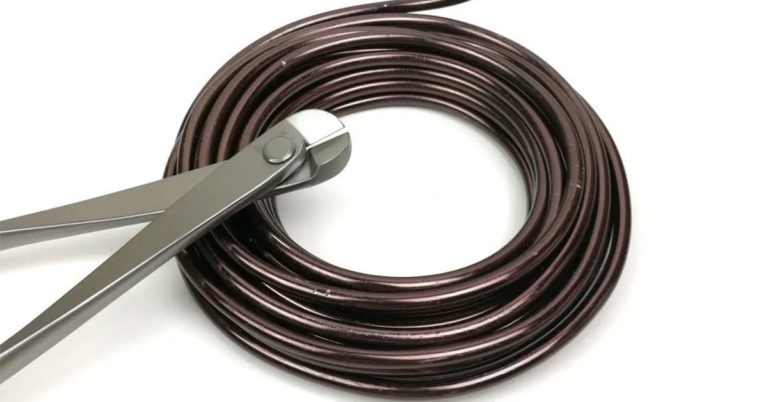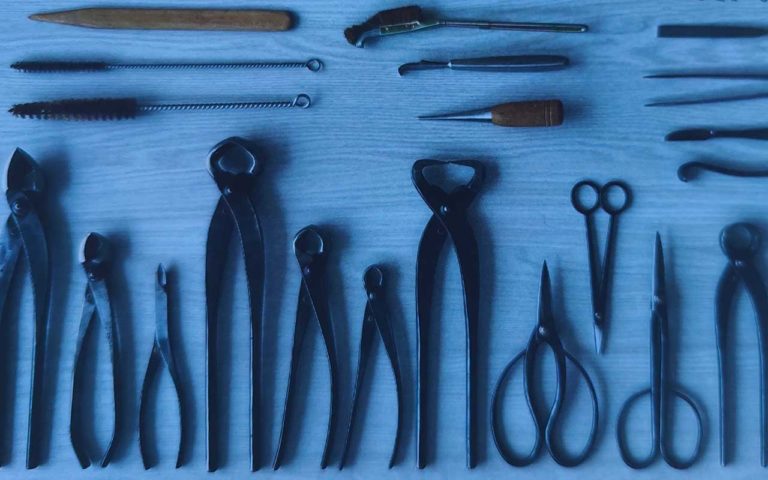I don’t advise to use garden soil for your bonsai. Growing a bonsai means controlling every aspect of its existence, starting from a sterile environment. Garden soil might contain bacteries or fungus.
A bonsai artist uses a substrate, by definition poor in nutrients. Those have to be added through a proper fertilization process.
But careful, fertilizing a bonsai tree highly depends on its age and its needs! You don’t eat the same food as you did when you were a kid, do you?
See also
Why your bonsai needs proper fertilization
The addition of fertilizer is used to fertilize, modify, and enrich the substrate you choose for your bonsai, improving its chemical and biological properties.
Fertilizing a bonsai is like providing yourself with extra vitamins and proteins when you work out, as the bonsai intakes only the nutrients it needs.
On the other hand, avoid over-fertilization at all cost: Too much fertilizer can be harmful to the bonsai’s health, causing root burn or excessive growth.
It is also essential to create a fertilizing schedule: Consistency is key when it comes to fertilizing bonsai. I’ll come back to it below.
A good bonsai fertilizer composition
Fertilizing allows the bonsai artist to bring his tree the requires elements needed to grow properly.
Here is a list of the basics element of a good fertilizer, and there chemical symbol:
- Nitrogen (N)
- Phosphorus (P)
- Potassium (K)
Now comes the list of secondary elements:
- Calcium (Ca)
- Manganese (Mn)
- Sulfur (S)
Finally come the trace elements used in precise situation during the life of the bonsai tree (growth stage, repoting, illness… We are talking about copper or iron for instance.
A fertilizer is characterized by its content of essential elements N, P and K.
These essential elements must be dosed according to the expected result on the bonsai.
Nitrogen is responsible for promoting lush and green foliage by stimulating the production of chlorophyll. Nitrogen also aids in cell division and protein synthesis, which in turn enhance the overall vigor and health of the bonsai.
A lack of nitrogen can have detrimental effects on the growth and overall health of a bonsai tree. Without an adequate supply of nitrogen, the leaves of the bonsai may become pale or yellowish, indicating a lack of chlorophyll.
Additionally, the tree may experience stunted growth, as nitrogen is responsible for promoting cell division and elongation. Weak stems, reduced leaf size, and decreased resistance to pests and diseases are also common symptoms of nitrogen deficiency in bonsai trees.
Phosphorus aids in the transfer and storage of energy within the tree, which is vital for the formation of strong root systems, healthy foliage, and robust flowers or fruits.
Potassium helps in the development of strong roots and ensures optimal water absorption. Potassium also plays a key role in regulating the opening and closing of stomata, which helps the tree control its water usage and prevent dehydration.
It facilitates the transportation of sugars and starches within the plant, providing energy for growth and fruit production.
Quid of liquid fertilizer: is it fit for bonsai
hen it comes to using liquid fertilizer, caution must be exercised.
While liquid fertilizers can be beneficial for bonsai, it is essential to ensure that it is used in the right situation.
Factors such as the tree’s species, age, and current health should be considered before choosing a suitable fertilizer.
A liquid fertilizer is more a complement, used to balance a deficiency. It’s like a boost, with short term effect (24 to 48 hours).
If your bonsai is sick, don’t use liquid fertilize. It will not absorb it properly.
Best time to fertilize a bonsai
The best time to fertilize a bonsai is during the growing season. In tempered climate region, it typically coincides with spring and summer, april and august.
This is when the bonsai is actively producing new growth and requires additional nutrients to support its development.
Grown bonsai trees need less fertilizer that young ones which need a « boost » to reach the size imagined by the bonsai artist.


